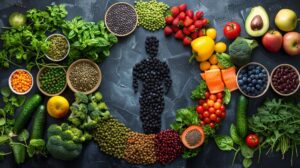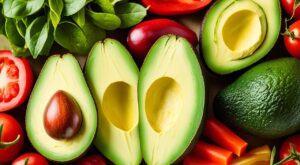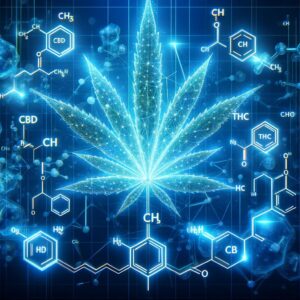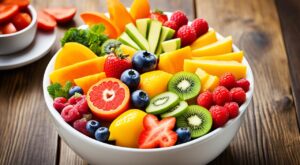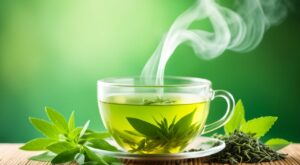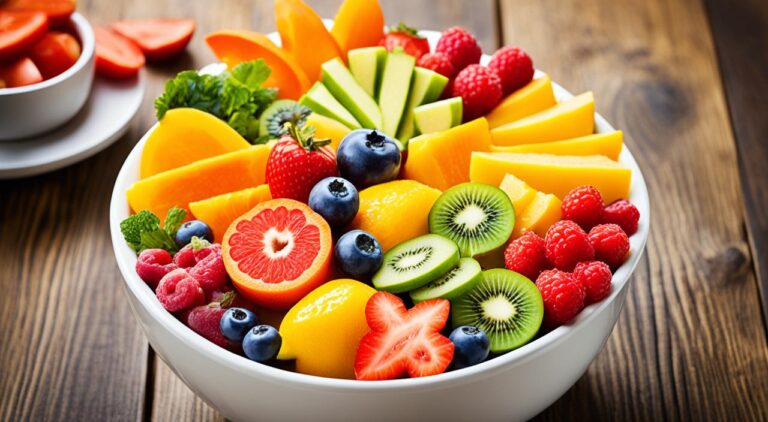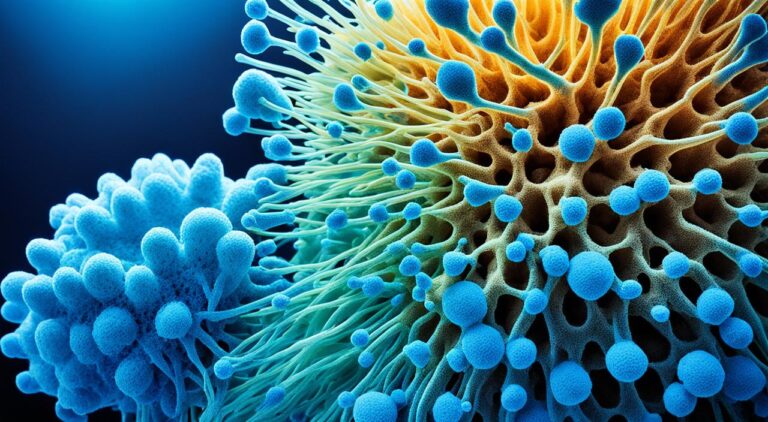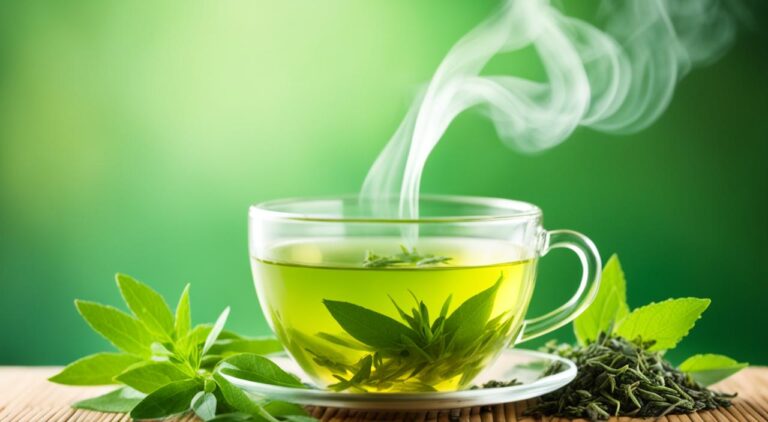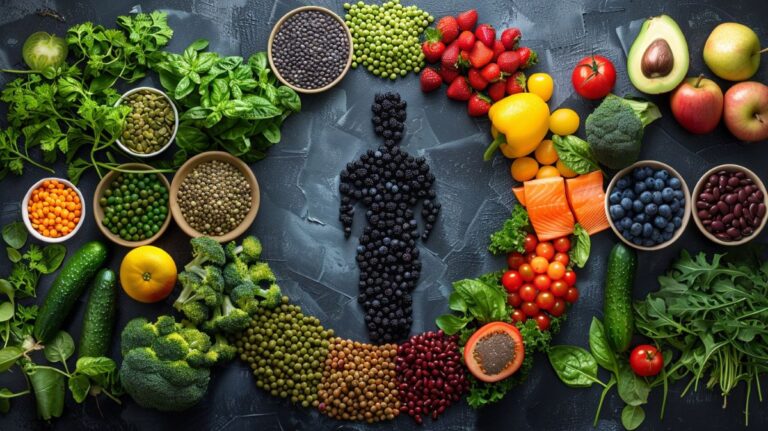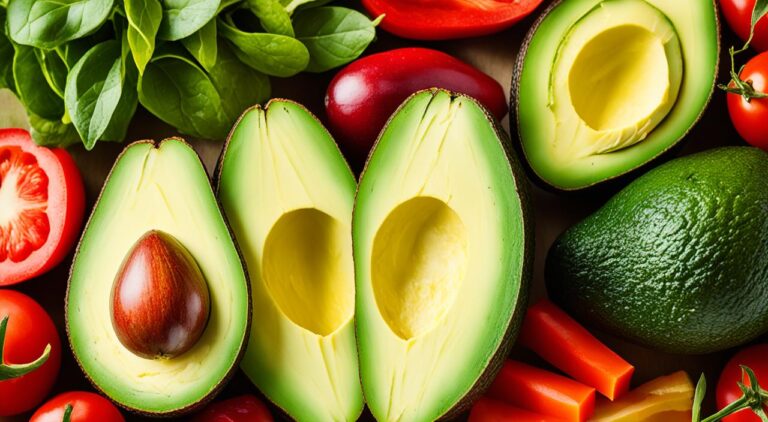Key Takaways:
- High Anthocyanin Levels: Bilberries are extremely rich in anthocyanins, which are beneficial for eye health and anti-inflammatory properties.
- Targeted Supplement Use: Bilberry extracts are commonly used in supplements for specific health benefits, particularly improving vision and enhancing circulation.
- Medicinal Recognition: Traditionally valued in European medicine for their potent medicinal properties.
- Less Culinary Flexibility: Bilberries have a strong flavor, making them less versatile for culinary use compared to blueberries.
Often overshadowed by their cousin, the blueberry, bilberries are small fruits packed with a big punch, particularly due to their rich content of anthocyanins. These natural compounds are not only responsible for the deep blue and purple hues of many fruits but also boast a plethora of health benefits.
Bilberries and blueberries are often confused due to their similar appearance and nutritional profiles, but there are distinct differences in their health benefits and the specific compounds they contain. Here’s a detailed comparison:
Botanical Differences
- Bilberries (Vaccinium myrtillus) are wild berries that grow predominantly in Europe. They are smaller and darker than blueberries, often with a red or purple flesh.
- Blueberries (Vaccinium corymbosum) are primarily cultivated in North America. They are larger, usually have light green to light purple flesh, and a milder taste.
Nutritional Compounds
- Anthocyanins: Both berries are rich in anthocyanins, but bilberries contain higher concentrations. Bilberries typically have around 300-700 mg of anthocyanins per 100 grams of fresh berries, mostly comprised of delphinidin and cyanidin glycosides. Blueberries generally have about 25-500 mg per 100 grams, with a broader mix of anthocyanins.
- Other Flavonoids: Bilberries also contain other flavonoids like quercetin and myricetin, which are present in significant amounts and contribute to their antioxidant capacity. Blueberries contain these too but in lower concentrations.
- Vitamins and Minerals: Both berries are good sources of vitamin C, vitamin K, and manganese. However, blueberries tend to have a slightly higher vitamin C content.
While both bilberries and blueberries are nutritious fruits rich in beneficial compounds, bilberries generally offer higher concentrations of anthocyanins and other flavonoids, which makes them particularly valuable for specific health benefits like vision support and anti-inflammatory actions.
What are Anthocyanins?
The Basics
Anthocyanins, derived from two Greek words meaning “flower” and “blue,” are a type of flavonoid found in various plants, contributing to their vibrant red, purple, and blue pigmentation. These compounds are particularly abundant in the skin of berries and change color with pH levels: they appear red in acidic environments and turn blue as the environment becomes more alkaline.
The Science Behind the Color
The molecular structure of anthocyanins includes an anthocyanidin core attached to a sugar molecule. This structure can vary significantly with different sugars (like glucose or galactose) and additional groups (hydroxyl or methoxyl), leading to hundreds of anthocyanin variations. The common types found in nature are cyanidin, delphinidin, and malvidin, among others.
Health Benefits of Anthocyanins
Antioxidant Properties
One of the standout features of anthocyanins is their antioxidant capability. These compounds are excellent at neutralizing free radicals, which are unstable molecules that can cause oxidative stress and damage to cells. By stabilizing these radicals, anthocyanins help protect the body from various diseases, including cardiovascular diseases and certain forms of cancer.
Beyond Antioxidants
Apart from their role as antioxidants, anthocyanins have a multitude of other health benefits. They are known to:
- Improve visual acuity and night vision
- Enhance cognitive functions and protect against neurodegenerative diseases
- Stabilize and protect DNA
- Modulate blood sugar levels, beneficial for diabetes management
- Exhibit anti-inflammatory and antimicrobial properties
Bilberry: A Rich Source of Anthocyanins
Bilberries are among the richest natural sources of anthocyanins. These small fruits are not only potent antioxidants but also have been used in various folk remedies to treat everything from gastrointestinal ailments to diabetes. The health effects of bilberries are largely attributed to their high anthocyanin content, which can differ based on environmental factors such as sunlight exposure and soil composition.
Table of Anthocyanin Concentrations in Bilberries
The concentrations of anthocyanins in bilberries can vary, but here’s a look at some of the main compounds and their relative abundances:
| Anthocyanin | Concentration (%) |
| Cyanidin-3-glucoside | 25% |
| Delphinidin-3-glucoside | 15% |
| Malvidin-3-glucoside | 35% |
| Peonidin-3-glucoside | 10% |
| Petunidin-3-glucoside | 15% |
These values illustrate the diversity and richness of anthocyanins in bilberries, making them a valuable addition to a health-conscious diet.
The Role of Anthocyanins in Plants
While humans benefit from the health properties of anthocyanins, these compounds play crucial roles in plant life as well. They are involved in protecting plants from UV radiation, attracting pollinators, and defending against pathogens.
Anthocyanins also contribute to a plant’s ability to withstand colder temperatures, which explains their abundance in berries like bilberries that thrive in cooler climates.
Anthocyanins are not just pigments that make fruits like bilberries colorful; they are powerful bioactive compounds with significant health benefits.
While much is already known about these fascinating molecules, ongoing research continues to uncover even more about their potential roles in health and disease prevention.
Exploring the Bioavailability of Anthocyanins
How the Body Uses Anthocyanins
Anthocyanins are unique among polyphenols because they can be absorbed in their intact form, which includes their sugar part. This absorption can occur as early as in the stomach and continues through the small intestine.
However, the overall absorption efficiency is relatively low, with variations depending on the specific anthocyanin. For instance, studies have shown that the absorption rates can range from 11% for malvidin-3-glucoside to 22% for cyanidin-3-glucoside.
Quick Presence in the Body
After consuming anthocyanin-rich foods like bilberries, traces of these compounds appear in the plasma within minutes. However, they are also rapidly cleared from the bloodstream, usually within a few hours, indicating a quick but fleeting presence.
Research on Anthocyanins from Bilberries
Despite the quick turnover in the human body, animal studies suggest that bilberry anthocyanins can accumulate in organs such as the kidneys and skin, potentially offering localized benefits.
The unique properties of these compounds mean they are not just passing through but are actively interacting with bodily tissues, potentially contributing to health benefits.
Impact on Health: Insights from Animal Studies
Animal models have demonstrated various beneficial effects of bilberry anthocyanins. They reduce inflammation and oxidative stress, protecting against DNA damage, and even improving insulin sensitivity and metabolic functions.
These findings hint at a promising potential for bilberry extracts in promoting health and preventing disease.
Anthocyanins’ Role in Disease Prevention
Cardiovascular Health
Anthocyanins have been linked to improved heart health by aiding in the reduction of blood pressure and enhancing overall vascular function.
This is partly due to their ability to modulate blood lipid levels and improve endothelial function, which is crucial for maintaining arterial health.
Vision Enhancement
Bilberries have a long-standing reputation for improving night vision and overall eye health.
The anthocyanins they contain help fortify blood vessels in the eye, enhancing blood flow and nutrient delivery to eye tissues, which can help combat eye fatigue and improve light adaptation.
Anticancer Potential
Research also points to the anticancer properties of anthocyanins. They have been found to induce apoptosis (cell death) in cancer cells, reduce inflammation (a known contributor to cancer), and even inhibit the proliferation of various cancer cell lines.
Anti-diabetic Effects
For those with diabetes, bilberry anthocyanins may help reduce blood sugar levels by affecting glucose metabolism and insulin sensitivity.
These effects make bilberry a potentially valuable dietary supplement for managing diabetes.
Antimicrobial Activity
Beyond their antioxidative and anti-inflammatory properties, anthocyanins from bilberries demonstrate antimicrobial activity against a range of pathogens.
This makes them potential candidates for natural food preservatives and a supportive therapy for reducing the risk of infections.
Investigating Anthocyanins in Clinical Settings
Despite the promising results from in vitro and animal studies, there is a need for well-designed clinical trials to fully understand the potential health benefits of anthocyanins in humans.
These studies could help establish effective dosages and further elucidate the mechanisms by which anthocyanins can contribute to health and disease prevention.
The journey of anthocyanins from colorful pigments to potent health allies is both fascinating and rich with potential.
As research continues to unfold, it becomes increasingly clear that these compounds offer a wide range of beneficial effects that could play a significant role in the prevention and management of various health conditions.
The Nutritional Spectrum of Bilberries
Rich in Essential Nutrients
Apart from anthocyanins, bilberries are loaded with other vital nutrients including vitamins C and K, fiber, and manganese, making them an excellent addition to a balanced diet.
These nutrients contribute to the overall antioxidant capacity of bilberries and support various bodily functions such as immune response and bone health.
Dietary Fiber Content
The high dietary fiber content in bilberries helps in maintaining digestive health, enhancing satiety, and regulating blood sugar levels, making it beneficial for weight management and metabolic health.
Integrating Bilberries into the Diet
Versatility in Culinary Uses
Bilberries can be enjoyed fresh or used in a variety of culinary preparations such as pies, jams, and smoothies. Their rich flavor and nutritional profile make them a favored ingredient in many traditional and modern recipes.
Considerations for Consumption
While fresh bilberries offer the highest levels of nutrients, they are also available as supplements, extracts, and powders.
However, when choosing bilberry supplements, it’s essential to select products that are standardized for anthocyanin content to ensure maximum health benefits.
Future Research and Practical Implications
Areas of Ongoing Research
Further research is needed to explore the full therapeutic potential of bilberries and their extracts.
Areas of particular interest include their role in managing chronic diseases, their long-term health benefits, and the optimal dosages for different health outcomes.
Bilberries in Traditional and Modern Medicine
Ethnomedicine
Bilberries have a rich history in traditional medicine across Europe and North America, where they have been used to treat ailments ranging from kidney stones to diabetes.
Documenting and analyzing traditional uses can provide valuable insights for modern medical research and potential new therapies.
Phytotherapy Research
Investigations into the phytotherapeutic applications of bilberries are promising. For example, exploring their use as a functional food in preventive healthcare or in the treatment of chronic diseases could open new avenues for natural health solutions.
Environmental Impact
Sustainability and Biodiversity
The cultivation of bilberries impacts local biodiversity and ecosystem health. Research into sustainable harvesting practices and the environmental footprint of large-scale bilberry farming is crucial to ensure that this natural resource is preserved for future generations.
Pollinator Health
Bilberries are dependent on bees and other pollinators, which are currently facing global decline. Studies on the relationship between bilberry cultivation and pollinator health could help in developing strategies to protect these essential creatures while securing the harvest of bilberries.
Nutraceutical Development
Bilberry Extracts in Nutraceuticals
The development of nutraceuticals incorporating bilberry extracts could leverage their health benefits in more concentrated forms. These products could be tailored for specific health conditions, such as vision support or anti-inflammatory formulations, offering targeted therapeutic benefits.
Regulatory and Safety Assessments
As the use of bilberries in dietary supplements and nutraceuticals grows, rigorous regulatory and safety assessments are essential. This ensures that consumers receive products that are not only effective but also safe for long-term use.
By exploring these additional dimensions of bilberry research and application, we can gain a deeper understanding of their potential and challenges, further enriching our appreciation of this remarkable berry.
Here’s a table showcasing some of the key antioxidants found in bilberries, their types, and the approximate percentages of these compounds present:
| Antioxidant | Type of Antioxidant | Approximate Percentage |
| Anthocyanins | Flavonoids | 25% |
| Vitamin C | Water-soluble vitamin | 0.5% |
| Vitamin E | Fat-soluble vitamin | 0.2% |
| Quercetin | Flavonol | 0.1% |
| Myricetin | Flavonol | 0.1% |
| Resveratrol | Stilbenoid | Trace amounts |
These values provide a general overview of the antioxidant composition in bilberries.
The actual percentages can vary based on growing conditions, the maturity of the berries, and specific bilberry varieties.
Anthocyanins are the most prominent group of antioxidants in bilberries, significantly contributing to their health benefits and vibrant color.
When considering bilberry supplements, it’s essential to look for products that adhere to high standards of quality and safety. Here are several key factors to consider when selecting a bilberry supplement:
Standardization of Anthocyanins
The most crucial factor in choosing a bilberry supplement is the standardization of anthocyanin content.
This ensures that the product contains a consistent and effective dosage of the active compounds. Look for supplements that clearly state the amount of anthocyanins in milligrams or as a percentage of the total content.
Purity and Authenticity
Verify that the bilberry supplement is free from contaminants such as heavy metals, pesticides, and other harmful additives.
Opt for products that have been tested and certified by reputable third-party organizations such as the US Pharmacopeia (USP), NSF International, or ConsumerLab.
Source and Extraction Methods
Bilberries and the methods used to extract the anthocyanins can significantly affect the quality and efficacy of the supplement.
Ideally, choose supplements made from wild or organically grown bilberries, as these are likely to have a higher anthocyanin content and lower pesticide exposure.
Additionally, extraction methods that use gentle solvents and preserve the integrity of the active compounds are preferable.
Manufacturer Reputation and Transparency
It’s advisable to choose supplements from manufacturers with a strong reputation for quality and transparency.
Reputable companies often provide detailed information about their product sourcing, manufacturing processes, and quality control measures.
They may also offer customer service and provide access to research or clinical studies supporting their products’ health claims.
Certification and Compliance
Check for health and safety certifications from recognized bodies that ensure the supplement meets regulatory standards.
Certifications such as GMP (Good Manufacturing Practices) indicate that the product is produced in a controlled environment according to quality standards.
Packaging and Stability
The packaging of bilberry supplements can affect how well the anthocyanins are preserved.
Light, air, and heat can degrade anthocyanins, so supplements should be packaged in dark, airtight containers and stored in a cool, dry place.
Some supplements may also include other antioxidants, like vitamin C or vitamin E, which can help stabilize anthocyanins and enhance their effectiveness.
Reviews and Consumer Feedback
Consider the experiences of other consumers. Online reviews and forums can provide insight into the effectiveness of different bilberry supplements and any potential side effects.
However, it’s important to critically evaluate these sources and consider the overall consensus rather than individual anecdotes.
By considering these factors, you can make informed decisions when choosing bilberry supplements, ensuring you receive a product that is safe, effective, and beneficial for their health.
The recommended dosage for bilberry supplements can vary depending on the concentration of anthocyanins and the purpose for which they are being used.
Generally, the dosages used in studies that have demonstrated health benefits range from:
- 40 to 160 milligrams of standardized anthocyanins per day for general health and vision improvement.
- Up to 480 milligrams per day for more specific therapeutic applications, such as improving night vision or managing vascular and circulatory issues.
For supplements that are not standardized just to anthocyanins but include whole bilberry extract, dosages can range from:
- 80 to 120 milligrams of bilberry extract, taken two to three times daily, where each dose typically contains 25% anthocyanins.
It’s Important to Follow the Dosage Recommendations
Be sure to look on the product label or those advised by a healthcare provider. Overconsumption of bilberry extracts could potentially lead to adverse effects, although bilberries and their extracts are generally considered safe at recommended dosages.
Our recommendations for bilberry in capsules, powder, and liquid extract formulations are based on the standardized content of anthocyanins to ensure you receive the maximum health benefits.
For capsules, we recommend choosing products that specify the amount of anthocyanins per serving, ideally around 25% of the extract. This ensures a consistent dose of the active compounds that contribute to bilberry’s antioxidant and other health benefits.
Our top recommendation for bilberry capsules is Oregon’s Wild Harvest, Bilberry Capsules, Antioxidant Supplement, 880 mg, 60 Count – $30.95 at Amazon. We have chosen this company and product because it is:
- Tested for heavy metals and other impurities for purity
- One of the highest dosages we found online
- The bilberry is certified organic (the only one we found with quality specs.)
- Standardized at 25% of the extract
- Made without artificial flavors, colors, excipients, or stearates
- Verified non-GMO ingredients
- Free of gluten, dairy, wheat, peanuts, soy, and corn allergens
- Made and manufactured in Redmond, Oregon USA
They come in powder and liqued extract formulations as well and should be used according to the concentration levels indicated on the label which can be easily adjusted for strength and efficacy.
In all cases, ensure that the product packaging provides comprehensive information on bilberry source, extraction methods, and third-party testing for purity and potency.
This transparency helps verify the quality of the bilberry product, safeguarding against contaminants and ensuring that the preparation process preserves the beneficial properties of the berry.
If you’re considering bilberry supplements for specific health conditions, it’s advisable to consult with a healthcare professional who can provide guidance based on your individual health needs and other factors.
Bilberries’ rich nutritional profile not only underscores their value in a balanced diet but also highlights their potential in preventive health care and therapeutic applications.
It’s clear that these small but mighty fruits carry immense potential for enhancing human health. Whether through direct dietary intake or standardized extracts, bilberries represent a powerful ally in the quest for wellness and disease prevention.
As scientific research progresses, the future may see bilberries becoming a staple in dietary recommendations and natural therapy options, harnessing their full potential to combat health challenges globally.


